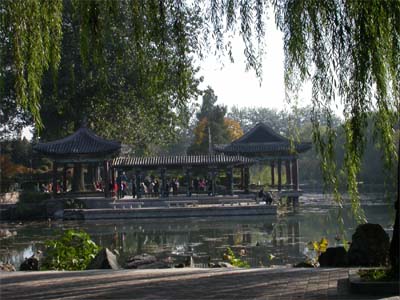Gardens
CASE 1: Women and Arts in the 13th Century
Gardens in China
Gardens have occupied a prominent place in Chinese culture since ancient times, but early gardens were mainly for the nobility. By the second century, gardens were becoming common among wealthy but nonaristocratic landowners. By the ninth century, the ideal of the garden as a reflection of a man’s ideals and character was beginning to coalesce. This ideal matured by the eleventh century, with Sima Guang’s essay on his “Garden of Independent Joy.” At the height of the European craze for Chinese gardens in the late eighteenth century, Sima Guang’s essay was translated into French in 1774.
Some decades earlier, in 1757, Sir William Chambers published what would become an influential book on Chinese gardens. Because of the popularity of his book, many features of Chinese gardens became common in European gardens. Willows, for instance, are now common in European gardens, but read what Chambers has to say about willows:
The weeping–willow is one of their [China’s] favourite trees, and always among those that border their lakes and rivers, being so planted as to have its branches hanging over the water. They likewise introduce trunks of decayed trees, sometimes erect, and at other times lying on the ground, being very nice about their forms, and the colour of the bark and moss on them.
Surviving section of the Manchu Imperial Garden, Tsinghua University, Beijing.
Photo: courtesy of Marty Powers.


